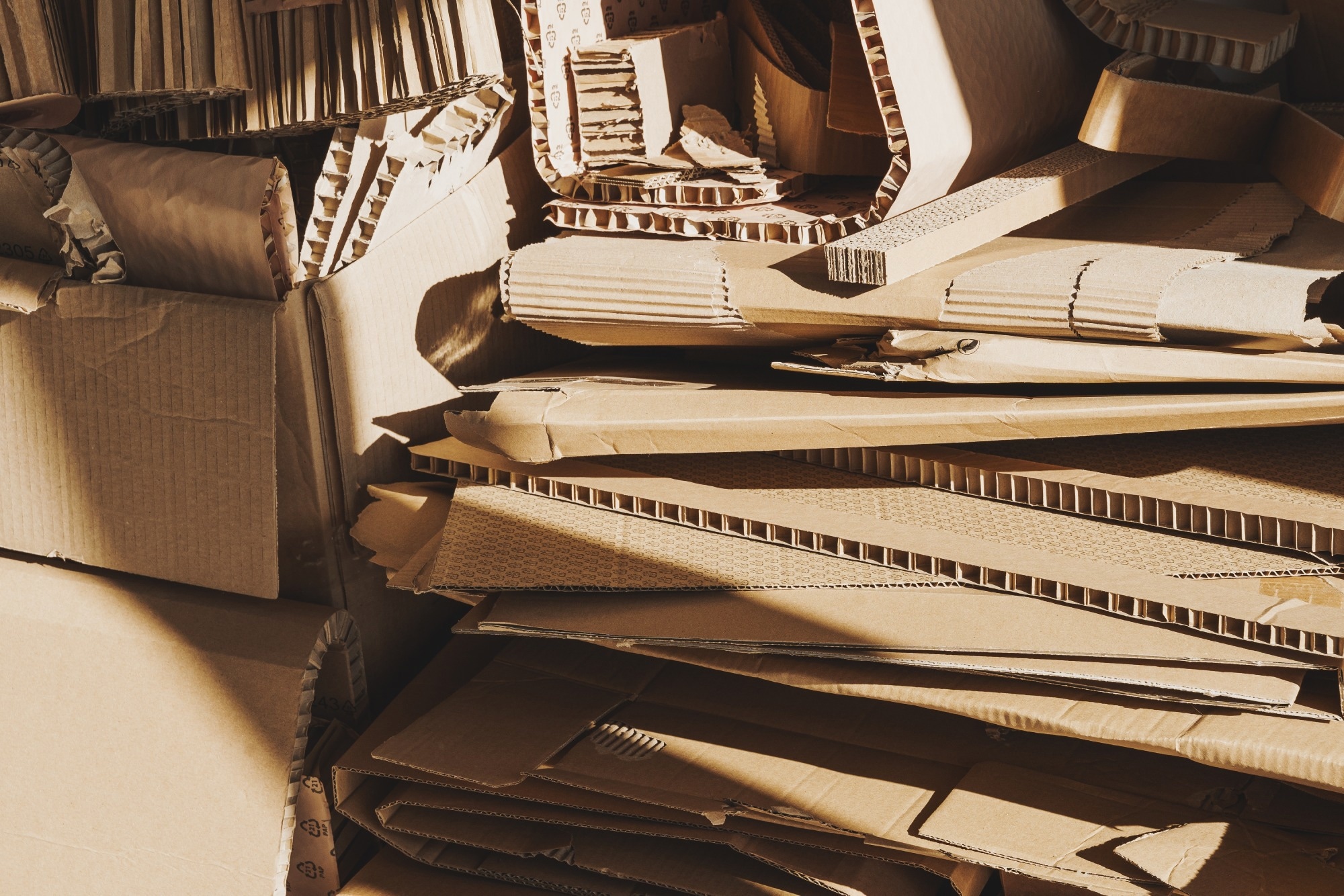Researchers have developed a new low-carbon building material by the name of cardboard-confined rammed earth (CCRE) that cuts the carbon footprint of concrete by 75 % while offering comparable structural performance.

Study: Cardboard-confined rammed earth towards sustainable construction. Image Credit: BLACKDAY/Shutterstock.com
The study, published in Structures, focuses on evaluating the material’s structural performance, environmental impact, and economic feasibility, while also examining its potential role in circular construction systems. At the same time, it identifies key challenges, particularly around durability and large-scale application, that need to be addressed before CCRE can move toward mainstream adoption.
Introduction
The urgency of this innovation is underscored by the construction sector’s outsized contribution to climate change - responsible for nearly 39 % of global CO2 emissions. These emissions stem not only from building operations but also from the embodied carbon in materials. Cement, the backbone of concrete, accounts for roughly 8 % of these global emissions. Compounding the issue, the surge in e-commerce has led to a sharp rise in cardboard waste, much of which remains underutilized.
This context sets the stage for the development of CCRE, a material that addresses both environmental challenges by turning waste cardboard into a structural asset. By combining recycled cardboard with locally available soil, the study proposes a method for reducing emissions and material costs simultaneously. To evaluate its feasibility, the researchers conducted a series of experimental tests, analytical models, and life cycle assessments, providing a multidimensional view of CCRE’s potential in modern construction.
Methodology and Approach
To assess CCRE’s structural performance, the researchers created cylindrical specimens using locally sourced clayey gravel, prepared for compaction by drying, sieving, and mixing with 10 % water. This soil mixture was then rammed into spiral-wound cardboard tubes of varying thicknesses (1, 2, 3, and 4 mm), each 200 mm tall and 100 mm in inner diameter. Compacted in five layers with a pneumatic rammer, the samples were left to air-dry for 28 days to simulate realistic curing conditions.
The structural evaluation included compression testing with a hydraulic press, applied at a consistent rate of 500 N/s, alongside tensile strip tests to assess the mechanical behavior of the cardboard itself. An analytical model was developed to predict compressive strength, while a carbon footprint analysis, based on IPCC emission factors, focused solely on the embodied carbon of materials used.
To understand the material’s long-term financial implications, a life cycle cost (LCC) analysis was conducted using a current net value approach. The model compared the 25-year economic performance of CCRE with 75-year projections for conventional cement-stabilized rammed earth (CSRE) and concrete columns, offering insight into both short- and long-term viability.
Results and Discussion
The results revealed that integrating cardboard confinement significantly improved the compressive strength of unstabilized rammed earth. While plain cardboard tubes achieved strengths between 0.25 MPa and 0.73 MPa, CCRE specimens within the same tube thicknesses showed much higher strengths, from 3.9 to 8.3 MPa. This tenfold increase highlights the synergistic interaction between the cardboard shell and soil core.
Of the various thicknesses tested, tubes with 3 mm and 4 mm walls provided the most consistent and desirable stress–strain behavior. These specimens exhibited higher peak strains and stable plateau phases, making them especially suitable for structural use in low-rise applications. Although CCRE doesn’t fully match the compressive strength of conventional concrete, it performs comparably to CSRE and offers better ductility - an advantage in absorbing structural stresses.
Failure mode analysis added further depth, showing that thicker cardboard layers delayed crack formation and distributed stress more evenly, leading to greater structural integrity. Failure typically occurred when hoop stress exceeded the cardboard’s tensile limit, reinforcing the importance of confinement in load-bearing performance.
Environmental and economic analyses provided additional context for CCRE’s appeal. Embodied carbon in CCRE columns was calculated at just 17.41 kg CO2e - 38.6 % lower than CSRE and 77.7 % lower than concrete.
The LCC assessment showed CCRE to be slightly more expensive than CSRE but significantly cheaper than concrete, with a 63.9 % cost reduction over its lifecycle. These findings suggest CCRE is not only environmentally responsible but also financially feasible for widespread application.
Still, the study acknowledges areas that require further exploration, particularly durability under moisture exposure and the long-term stability of cardboard materials in varied climates. These limitations offer a roadmap for future research aimed at optimizing the material for broader use.
Conclusion
These findings suggest that CCRE is more than just a low-carbon alternative; it’s a structurally capable material with practical applications in low-rise construction.
Its enhanced ductility and consistent performance across varying cardboard thicknesses position it well for contexts where flexibility and resilience are valued. However, while the environmental and economic benefits are clear, questions around durability, particularly under moisture exposure, remain a critical focus for future research.
Addressing these limitations will be essential to transitioning CCRE from the lab to the field. Further investigation into bio-based stabilizers, long-term weathering performance, and real-world deployment scenarios could help close the gap. As the industry moves toward carbon-neutral targets, materials like CCRE offer a pathway not only to reduce emissions, but also to reframe waste as a structural asset.
Journal Reference
Ma, J., Zhang, H., Zhong, Y., et al. (2025). Cardboard-confined rammed earth towards sustainable construction. Structures, 80, 110117. DOI: 10.1016/J.ISTRUC.2025.110117. https://www.sciencedirect.com/science/article/pii/S2352012425019320?via%3Dihub
Disclaimer: The views expressed here are those of the author expressed in their private capacity and do not necessarily represent the views of AZoM.com Limited T/A AZoNetwork the owner and operator of this website. This disclaimer forms part of the Terms and conditions of use of this website.